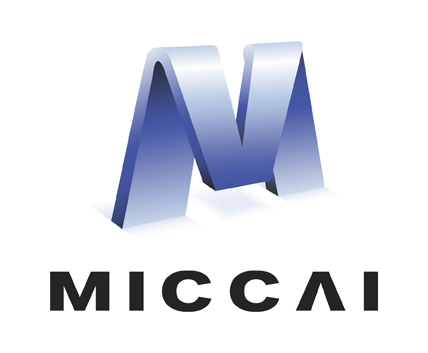Abstract
Longitudinal fetal brain atlas is a powerful tool for understanding and characterizing the complex process of fetus brain development. Existing fetus brain atlases are typically constructed by averaged brain images on discrete time points independently over time. Due to the differences in onto-genetic trends among samples at different time points, the resulting atlases suffer from temporal inconsistency, which may lead to estimating error of the brain developmental characteristic parameters along the timeline. To this end, we proposed a multi-stage deep-learning framework to tackle the time inconsistency issue as a 4D (3D brain volume + 1D age) image data denoising task. Using implicit neural representation, we construct a continuous and noise-free longitudinal fetus brain atlas as a function of the 4D spatial-temporal coordinate. Experimental results on two public fetal brain atlases (CRL and FBA-Chinese atlases) show that the proposed method can significantly improve the atlas temporal consistency while maintaining good fetus brain structure representation. In addition, the continuous longitudinal fetus brain atlases can also be extensively applied to generate finer 4D atlases in both spatial and temporal resolution.
Access this chapter
Tax calculation will be finalised at checkout
Purchases are for personal use only
Similar content being viewed by others
References
Atkinson, D., Hill, D.L., Stoyle, P.N., Summers, P.E., Keevil, S.F.: Automatic correction of motion artifacts in magnetic resonance images using an entropy focus criterion. IEEE Trans. Med. Imaging 16(6), 903–910 (1997)
Chen, L., et al.: Construction of longitudinally consistent 4D infant cerebellum atlases based on deep learning. In: de Bruijne, M., et al. (eds.) MICCAI 2021. LNCS, vol. 12904, pp. 139–149. Springer, Cham (2021). https://doi.org/10.1007/978-3-030-87202-1_14
Gholipour, A., et al.: A normative spatiotemporal MRI atlas of the fetal brain for automatic segmentation and analysis of early brain growth. Sci. Rep. 7(1), 1–13 (2017)
Habas, P.A., et al.: A spatiotemporal atlas of MR intensity, tissue probability and shape of the fetal brain with application to segmentation. Neuroimage 53(2), 460–470 (2010)
He, K., Zhang, X., Ren, S., Sun, J.: Deep residual learning for image recognition. In: Proceedings of the IEEE Conference on Computer Vision and Pattern Recognition, pp. 770–778 (2016)
He, K., Zhang, X., Ren, S., Sun, J.: Identity mappings in deep residual networks. In: Leibe, B., Matas, J., Sebe, N., Welling, M. (eds.) ECCV 2016. LNCS, vol. 9908, pp. 630–645. Springer, Cham (2016). https://doi.org/10.1007/978-3-319-46493-0_38
Huang, T., Li, S., Jia, X., Lu, H., Liu, J.: Neighbor2neighbor: self-supervised denoising from single noisy images. In: Proceedings of the IEEE/CVF Conference on Computer Vision and Pattern Recognition, pp. 14781–14790 (2021)
Ioffe, S., Szegedy, C.: Batch normalization: accelerating deep network training by reducing internal covariate shift. In: International Conference on Machine Learning, pp. 448–456. PMLR (2015)
Kingma, D.P., Ba, J.: Adam: A method for stochastic optimization. arXiv preprint arXiv:1412.6980 (2014)
Krull, A., Buchholz, T.O., Jug, F.: Noise2void-learning denoising from single noisy images. In: Proceedings of the IEEE/CVF Conference on Computer Vision and Pattern Recognition, pp. 2129–2137 (2019)
Lehtinen, J., et al.: Noise2noise: learning image restoration without clean data. arXiv preprint arXiv:1803.04189 (2018)
Liu, X., Niethammer, M., Kwitt, R., Singh, N., McCormick, M., Aylward, S.: Low-rank atlas image analyses in the presence of pathologies. IEEE Trans. Med. Imaging 34(12), 2583–2591 (2015)
Nair, V., Hinton, G.E.: Rectified linear units improve restricted Boltzmann machines. In: ICML (2010)
Payette, K., et al.: An automatic multi-tissue human fetal brain segmentation benchmark using the fetal tissue annotation dataset. Sci. Data 8(1), 1–14 (2021)
Rahaman, N., et al.: On the spectral bias of neural networks. In: International Conference on Machine Learning, pp. 5301–5310. PMLR (2019)
Righini, A., et al.: Hippocampal infolding angle changes during brain development assessed by prenatal MR imaging. Am. J. Neuroradiol. 27(10), 2093–2097 (2006)
Sadri, A.R., et al.: MRQY-an open-source tool for quality control of MR imaging data. Med. Phys. 47(12), 6029–6038 (2020)
Serag, A., et al.: A multi-channel 4d probabilistic atlas of the developing brain: application to fetuses and neonates. Ann. BMVA 2012(3), 1–14 (2012)
Tancik, M., et al.: Fourier features let networks learn high frequency functions in low dimensional domains. Adv. Neural. Inf. Process. Syst. 33, 7537–7547 (2020)
Tilea, B., et al.: Cerebral biometry in fetal magnetic resonance imaging: new reference data. Ultrasound Obstet. Gynecol. 33(2), 173–181 (2009)
Ulyanov, D., Vedaldi, A., Lempitsky, V.: Deep image prior. In: Proceedings of the IEEE Conference on Computer Vision and Pattern Recognition, pp. 9446–9454 (2018)
Wu, J., et al.: Age-specific structural fetal brain atlases construction and cortical development quantification for Chinese population. NeuroImage 241, 118412 (2021) https://doi.org/10.1016/j.neuroimage.2021.118412, https://www.sciencedirect.com/science/article/pii/S105381192100687X
Wu, Q., et al.: IREM: high-resolution magnetic resonance image reconstruction via implicit neural representation. In: de Bruijne, M., et al. (eds.) MICCAI 2021. LNCS, vol. 12906, pp. 65–74. Springer, Cham (2021). https://doi.org/10.1007/978-3-030-87231-1_7
Zhang, Y., et al.: Consistent spatial-temporal longitudinal atlas construction for developing infant brains. IEEE Trans. Med. Imaging 35(12), 2568–2577 (2016)
Zhao, F., Wu, Z., Wang, L., Lin, W., Xia, S., Li, G.: Learning 4D infant cortical surface atlas with unsupervised spherical networks. In: de Bruijne, M., et al. (eds.) MICCAI 2021. LNCS, vol. 12902, pp. 262–272. Springer, Cham (2021). https://doi.org/10.1007/978-3-030-87196-3_25
Author information
Authors and Affiliations
Corresponding author
Editor information
Editors and Affiliations
Rights and permissions
Copyright information
© 2022 The Author(s), under exclusive license to Springer Nature Switzerland AG
About this paper
Cite this paper
Chen, L., Wu, J., Wu, Q., Wei, H., Zhang, Y. (2022). Continuous Longitudinal Fetus Brain Atlas Construction via Implicit Neural Representation. In: Licandro, R., Melbourne, A., Abaci Turk, E., Macgowan, C., Hutter, J. (eds) Perinatal, Preterm and Paediatric Image Analysis. PIPPI 2022. Lecture Notes in Computer Science, vol 13575. Springer, Cham. https://doi.org/10.1007/978-3-031-17117-8_4
Download citation
DOI: https://doi.org/10.1007/978-3-031-17117-8_4
Published:
Publisher Name: Springer, Cham
Print ISBN: 978-3-031-17116-1
Online ISBN: 978-3-031-17117-8
eBook Packages: Computer ScienceComputer Science (R0)





